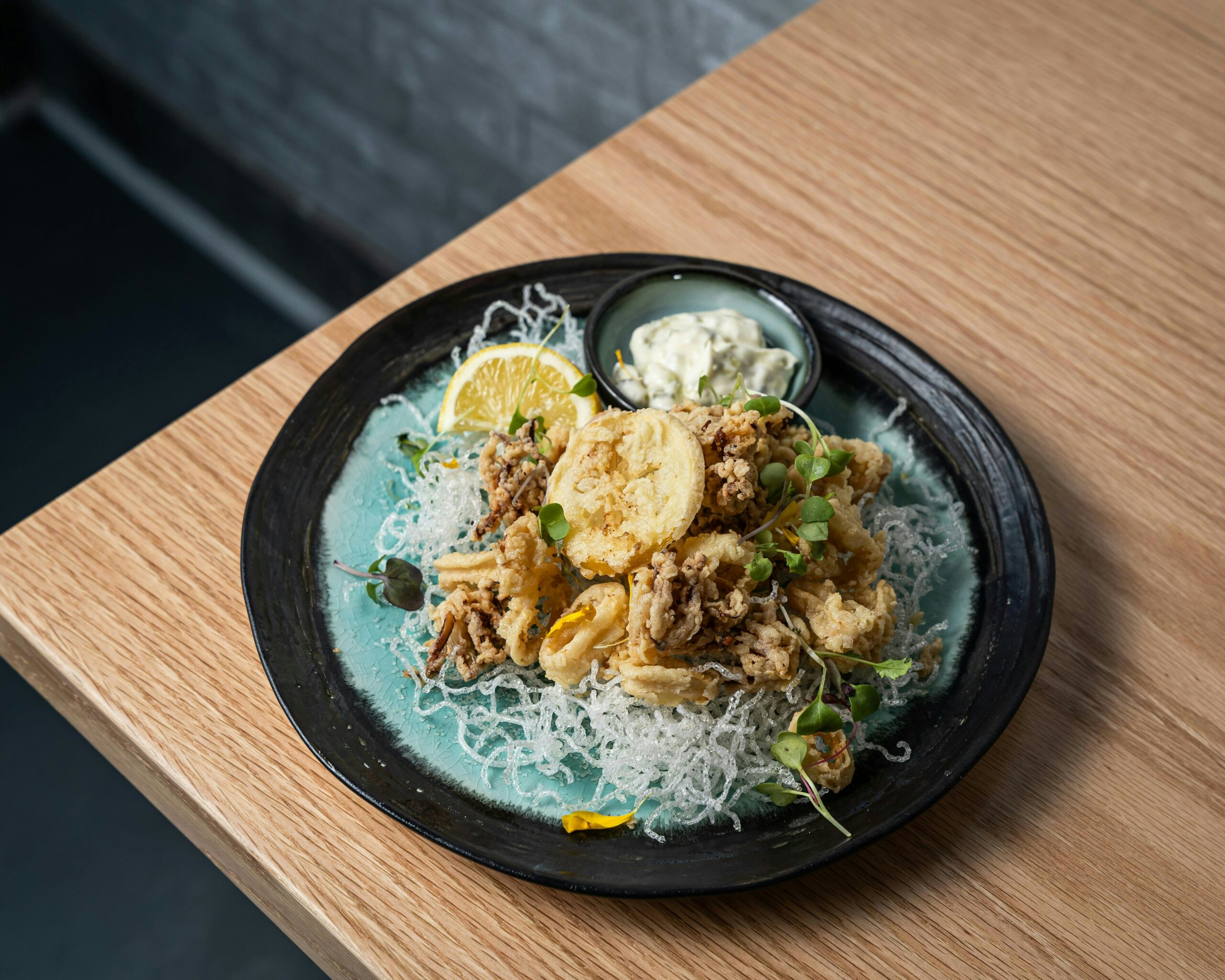Elevate Your Home Cooking with Global Flavors and Timeless Techniques
There was a time when my idea of a culinary adventure involved tossing some spaghetti into boiling water and calling it a night. But as the years rolled on (and my taste buds became more demanding), I began to realize that a world of flavors was waiting just outside my kitchen door. Cooking at home shouldn’t be a chore; it should be a journey—an exploration of global cuisines and cooking techniques that have stood the test of time. So, how do you elevate your home cooking from mundane to magnificent? Well, let’s dive in!
Understanding Global Flavors
To truly elevate your home cooking, you first need to understand what global flavors mean. They’re not just about adding a pinch of this or a dash of that; it’s about embracing the rich histories, cultures, and traditions that come with food around the world. Each cuisine tells a story, and every ingredient plays a role. From the aromatic spices of India to the umami-packed sauces of Japan, exploring these flavors can be like embarking on a round-the-world trip—all from your kitchen.
The Spice Route: A Flavorful Journey
Spices are the backbone of many cuisines. They transform the ordinary into the extraordinary. Consider the journey of turmeric, which has traveled from the lush fields of India to spice racks around the globe. Studies suggest that turmeric offers more than just a vibrant color; it’s packed with anti-inflammatory properties. Add it to soups, stews, or even smoothies, and you’ll not only boost flavor but your health too.
Here’s a quick guide to some essential spices from various regions:
- India: Cumin, coriander, and garam masala—perfect for curries and rice dishes.
- Middle East: Sumac and za’atar—ideal for seasoning meats and salads.
- Latin America: Oregano and achiote—great for marinades and sauces.
- Asia: Star anise and five-spice powder—wonderful in stir-fries and braised dishes.
As you explore these spices, don’t be afraid to experiment. After all, some of the best culinary discoveries come from happy accidents (or, as I like to call them, “serendipitous disasters”).
Timeless Techniques: The Foundation of Great Cooking
While flavors excite the palate, techniques are the bedrock of cooking. Mastering the basics can elevate even the most humble ingredients. Techniques passed down through generations often define the essence of a dish. For example, the French have perfected the art of sauces—think of a classic béchamel or a rich demi-glace. These sauces can elevate simple meals into culinary masterpieces.
Essential Cooking Techniques to Master
Here are a few timeless techniques that every home cook should consider mastering:
- Sautéing: This quick-cooking technique is all about high heat and a little fat. It’s the secret behind perfectly cooked vegetables and proteins.
- Braising: A combination of cooking methods—first searing meat, then slow cooking it in liquid. This technique is especially effective for tough cuts, transforming them into tender delights.
- Roasting: Whether it’s vegetables, meats, or even fruits, roasting brings out natural sweetness and depth of flavor. Don’t underestimate the power of a hot oven!
- Emulsifying: Think vinaigrettes and mayonnaise. Mastering emulsification can elevate your salads and dressings, adding richness and body.
As you practice these techniques, keep in mind that cooking should be enjoyable. Nobody becomes a master chef overnight, and sometimes it’s okay to burn the garlic once in a while (trust me, I’ve been there).
Exploring Global Cuisines
Now that you have an understanding of flavors and techniques, let’s explore a few global cuisines that can ignite your passion for cooking. Each cuisine brings its own unique perspective, and trying your hand at them can be both fun and rewarding.
Italian: The Art of Simplicity
Italian cuisine is the epitome of simplicity. With its focus on fresh ingredients, it teaches us that less can indeed be more. A classic marinara sauce—made from ripe tomatoes, garlic, olive oil, and a hint of basil—can elevate a bowl of pasta into a comforting masterpiece.
Don’t overlook the importance of seasonal ingredients. I once visited a small market in Tuscany, where the tomatoes were so fresh, they practically sang. Cooking with seasonal produce not only enhances flavor but also supports local farmers.
Thai: A Symphony of Flavors
Thai cooking is a balance of sweet, sour, salty, and spicy—a culinary symphony that dances on the taste buds. The use of fresh herbs, such as cilantro and basil, along with ingredients like fish sauce, creates complex layers of flavor. A well-made pad Thai can transport you straight to the bustling streets of Bangkok.
One of my fondest memories is enjoying a homemade green curry, fragrant with lemongrass and galangal. The balance of flavors was so satisfying that I made it my mission to recreate that dish at home. (Let’s just say my first attempt was less than stellar, but practice makes perfect!)
Mexican: More Than Just Tacos
When many think of Mexican cuisine, tacos often come to mind. However, it’s a vast tapestry of flavors and techniques. From mole sauces that take days to prepare to the simple joy of fresh guacamole, Mexican food is all about boldness and warmth.
One particularly memorable experience was attending a family fiesta where everyone came together to make tamales. The laughter, the stories, and the delicious aromas made me realize that Mexican cooking is as much about community as it is about flavor.
Combining Techniques and Flavors
The magic happens when you start combining these techniques and flavors. Perhaps you’re inspired by Italian cuisine but want to give it a spicy twist by incorporating Thai ingredients. Imagine a spicy basil pesto over a bed of zoodles (zucchini noodles)—a healthy, flavorful fusion that would impress anyone.
Or consider the possibilities of Mexican and Middle Eastern influences. A shawarma-inspired taco, filled with marinated grilled meats, fresh vegetables, and a drizzle of tahini sauce, could be the perfect way to merge two beloved cuisines. The beauty of cooking at home is that the sky’s the limit. Don’t be afraid to get creative!
Utilizing Global Ingredients
Incorporating global flavors also means sourcing diverse ingredients. Many local markets now offer a plethora of international products. If you can’t find certain items, there’s always online shopping. (I once ordered a jar of harissa from an obscure website only to find out it was shipped from halfway across the world. But hey, it was worth it!)
The Importance of Presentation
Let’s not forget about presentation! Eating is a multi-sensory experience, and how you plate your food can make a significant difference. A beautifully arranged dish can entice even the pickiest eaters. Use vibrant colors and interesting textures to make your meals visually appealing. Remember, we eat with our eyes first!
Tips for Stunning Presentation
Here are some tips for plating your dishes:
- Use contrast: Pair bright colors with muted tones to create visual interest.
- Height matters: Don’t be afraid to stack ingredients or use vertical elements to add dimension.
- Garnish wisely: Fresh herbs, citrus zest, or a drizzle of sauce can elevate the overall look.
- Keep it clean: Wipe down the edges of your plates for a polished finish.
After all, who doesn’t enjoy a dish that looks as good as it tastes? I once had a friend who would serve dinner on his finest china, regardless of whether it was a simple stir-fry or a gourmet feast. His philosophy: “Every meal is an occasion.”
Building a Culinary Community
As you explore global flavors and timeless techniques, consider sharing your journey with others. Cooking can be a solitary pursuit, but it can also bring people together. Invite friends over for a themed dinner night where everyone contributes a dish from a different cuisine. You’ll not only expand your culinary horizons but create cherished memories in the process.
I remember hosting a “Around the World” potluck, where everyone brought a dish from a different country. The food was amazing, but the conversations and laughter were what made the night truly special. There’s something magical about sharing a meal that transcends cultural boundaries.
Final Thoughts: Cooking as an Adventure
In conclusion, elevating your home cooking with global flavors and timeless techniques is not just about mastering recipes; it’s about embracing the adventure of culinary exploration. Dive into the world of spices, master essential cooking techniques, and don’t shy away from merging different cuisines.
As you embark on this flavorful journey, remember that cooking is as much about the process as it is about the end result. Enjoy the mishaps, celebrate the successes, and most importantly—have fun! So grab your apron, open your spice cabinet, and let your culinary adventure begin!
Happy cooking!




